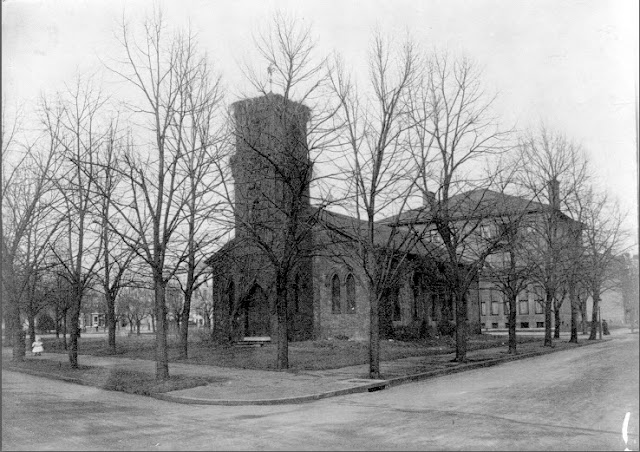Search
Collected Writings and Historic Images of Washington, DC's Famed Dupont Circle Neighborhood
Featured Article
- Get link
- X
- Other Apps
Samuel W. Woodward: Washington, DC Department Store Magnate and Real Estate Developer
Samuel Woodward was born in Damariscotta, Maine, on December 13, 1848. In 1873, he established a dry goods business in Chelsea, Massachusetts with partner Alvin Lothrop. After opening several stores in the Boston area, they joined with Charles E. Cochrane and moved to Washington in 1880. Woodward and Lothrop would not only be business partners but would also become neighbors when Lothrop built his stately mansion just south of Woodward’s on the site of the Tindall house.
 |
| Samuel W. Woodward. Author's collection. |
| Woodley Apartment building at 1851 Columbia Road. Historical Society of Washington, DC |
After getting his feet wet in real estate with the Woodley apartment building, Woodward then partnered with architect Frederick Pyle, who had designed many town houses along Calvert and Biltmore Streets, to build eleven town houses on Leroy Place and Bancroft Place in 1907 in the Sheridan-Kalorama neighborhood. Woodward had also built other four modest apartment buildings in 1908 and 1912.
In 1886, Woodward & Lothrop department store founder, Samuel Woodward, built a house for himself located at 2015 Wyoming Avenue designed by architect Eugene Clarence Gardner. Woodward selected the location of the highest elevation in Kalorama Triangle, sitting at the top of the rise of the hill on Connecticut Avenue that looked down on Connecticut Avenue before descending into the Rock Creek Valley.
 |
| Woodward's house at 2015 Wyoming Avenue. Historical Society of Washington, DC. |
 |
| Woodward's namesake apartment building, the Woodward at 2311 Connecticut Avenue. Library of Congress. |
Woodward enlisted the architectural firm of Harding & Upman and, in 1909, started construction of a seven-story Mission Revival–style apartment house of brick and iron. When it was ready for occupancy in October 1910, it offered a total of forty-five rental apartments. Three apartments located over the building’s entrance were duplex units, with a dining room, kitchen, pantry, parlor and library on the first level and three bedrooms and a bath on the second. The building originally offered many amenities including a roof garden, a summer pavilion and a doctor’s office on the ground floor. The basement contained a party room, a billiard room and a barbershop. In 1973, the Woodward would be converted into a condominium.
In 1910, Woodward undertook what would be his final building project, the Airy View, located at 2415 Twentieth Street, NW. The building remains unique in Kalorama Triangle, as it is the only one with a central bay pushed back from the street to create an enclosed courtyard, a popular configuration of Washington apartment buildings at this time.
| The Airy View, located at 2415 Twentieth Street, NW. |
Samuel Woodward died in 1917. His house on Wyoming Avenue was razed in 1926 for the construction of 2101 Connecticut Avenue.
 |
| The building at 2101 Connecticut is now on the location of the Woodward house. Library of Congress. |
- Get link
- X
- Other Apps
Popular Posts
William M. Galt House at 1328 Connecticut Avenue
- Get link
- X
- Other Apps
William Hitt and Katherine Elkins: A Portrait of a Marriage...or Two
- Get link
- X
- Other Apps
Levi and Mary Leiter: Washington, DC's Quintessential Parvenus and Buccaneers
- Get link
- X
- Other Apps
The Story of St. Thomas Church: A Rise From the Ashes
- Get link
- X
- Other Apps




Comments
Post a Comment